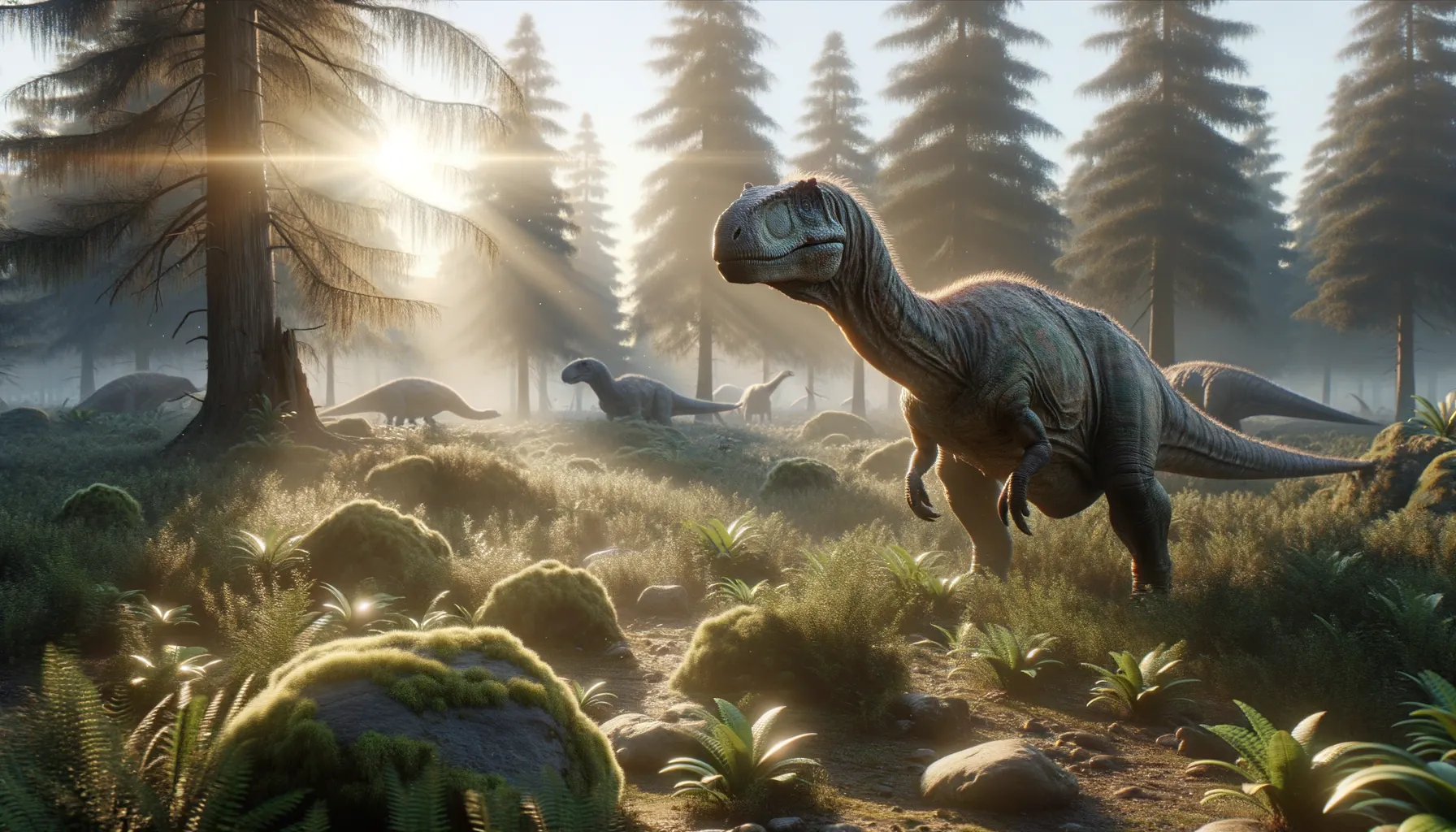
Rhabdodon
A sturdy browser of ancient Europe.
Period
Cretaceous
Length
Measured about 12 to 14 feet in length.
Height
Stood around 4 feet tall at the shoulder.
Weight
Weighed approximately half a ton.
Rhabdodon was a small, herbivorous dinosaur during the Late Cretaceous period. Its build was robust, suggesting it adapted well to surviving in diverse environments by browsing on low-lying vegetation. Rhabdodon’s fossils have provided significant insights into the herbivorous dinosaurs of Europe, and it is a point of interest for understanding how dinosaurs in this region evolved and interacted with their habitat.
Diet
Rhabdodon primarily fed on ferns and low-lying plants. Its diet consisted of a variety of vegetation available in its ecosystem, allowing it to thrive.
Hunting
Being a herbivore, Rhabdodon did not hunt but rather foraged for its sustenance. It relied on browsing through dense plant material to satisfy its dietary needs.
Environmental challenges
Rhabdodon faced environmental challenges such as fluctuating climates, impacting plant availability. Predators in its environment posed another challenge, requiring it to stay vigilant and adapt. Its robust build may have helped it navigate difficult terrains and endure such pressures. Moreover, as Europe was partly isolated by seas at the time, environmental shifts likely influenced its evolutionary path.
Speed
Rhabdodon was not particularly fast, relying on movement through vegetation.
Lifespan
Lifespan estimates suggest it lived up to 20 years.
First discovery
Discovered in the late 19th century in France.
Fun Facts
- Rhabdodon was a dinosaur that lived during the Late Cretaceous period, around 70 to 66 million years ago.
- Its name means 'fluted tooth,' referring to the grooves in its teeth, which were perfect for grinding plants.
- Rhabdodon was relatively small for a dinosaur, measuring about 2 to 4 meters long, roughly the size of a cow.
- Its fossils are mainly found in France and Spain, indicating it lived in what is now Europe.
- Rhabdodon was a herbivore, and its strong legs suggest it could move quickly, possibly to escape predators or find food.
- Scientists believe Rhabdodon might have lived in herds, providing protection against carnivorous dinosaurs.
- Despite being plant-eaters, their teeth structure was surprisingly advanced, bearing a resemblance to those of more modern animals like horses.
Growth and Development
Rhabdodon grew quickly in its early years to reach a survival-ready size, protecting it from predators. As it matured, its growth slowed, focusing more on maintaining its robust health. Fossil evidence suggests changes in bone structure and density as it aged, typical of dinosaur development. This growth pattern reflects its adaptation to a herbivorous lifestyle.
Habitat
It lived in a region that was a patchwork of woodland and open areas, offering a diverse range of plant life. Its habitat was influenced by periodic climate changes, sometimes leading to wetter conditions and other times drier climates. The lush greenery provided the food Rhabdodon needed, while geographical barriers offered some protection from predators. Water sources were essential to its habitat, influencing where it would settle.
Interaction with other species
Rhabdodon coexisted with a variety of both herbivorous and carnivorous dinosaurs. It likely had to compete with other herbivores for food resources. Predators such as the theropods sometimes preyed on Rhabdodon, making vigilance crucial for its survival. Its interactions suggest a complex ecosystem balance where various adaptations were necessary.
Natural lifespan
In optimal conditions, Rhabdodon could live up to 20 years.
Reproduction
Rhabdodon likely practiced oviparity, laying eggs in secure nests. Fossilized nests suggest group nesting behaviors, helping protect the young from predators. After hatching, young Rhabdodon probably received no parental care and had to fend for themselves shortly after birth. The strategies of reproduction were key to ensuring species survival.
Social behaviour
Rhabdodon might have exhibited some degree of social behavior, possibly moving in small groups for better protection. This social structure could have aided in foraging and collective vigilance against predators. Evidence from nesting sites suggests possible communal nesting areas. Social interactions may have been crucial for its survival strategy.
Fossil locations
Fossils of Rhabdodon have primarily been found in France, providing insights into European dinosaur fauna. Other locations include parts of Spain, indicating a wider distribution across southern Europe. These fossil locations highlight its adaptation to varied landscapes and climates during the Late Cretaceous. The findings contribute significantly to the paleontological record of European Mesozoic ecosystems.
